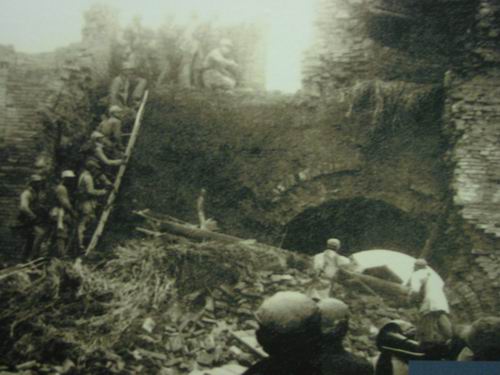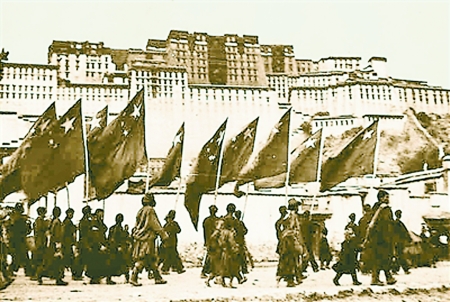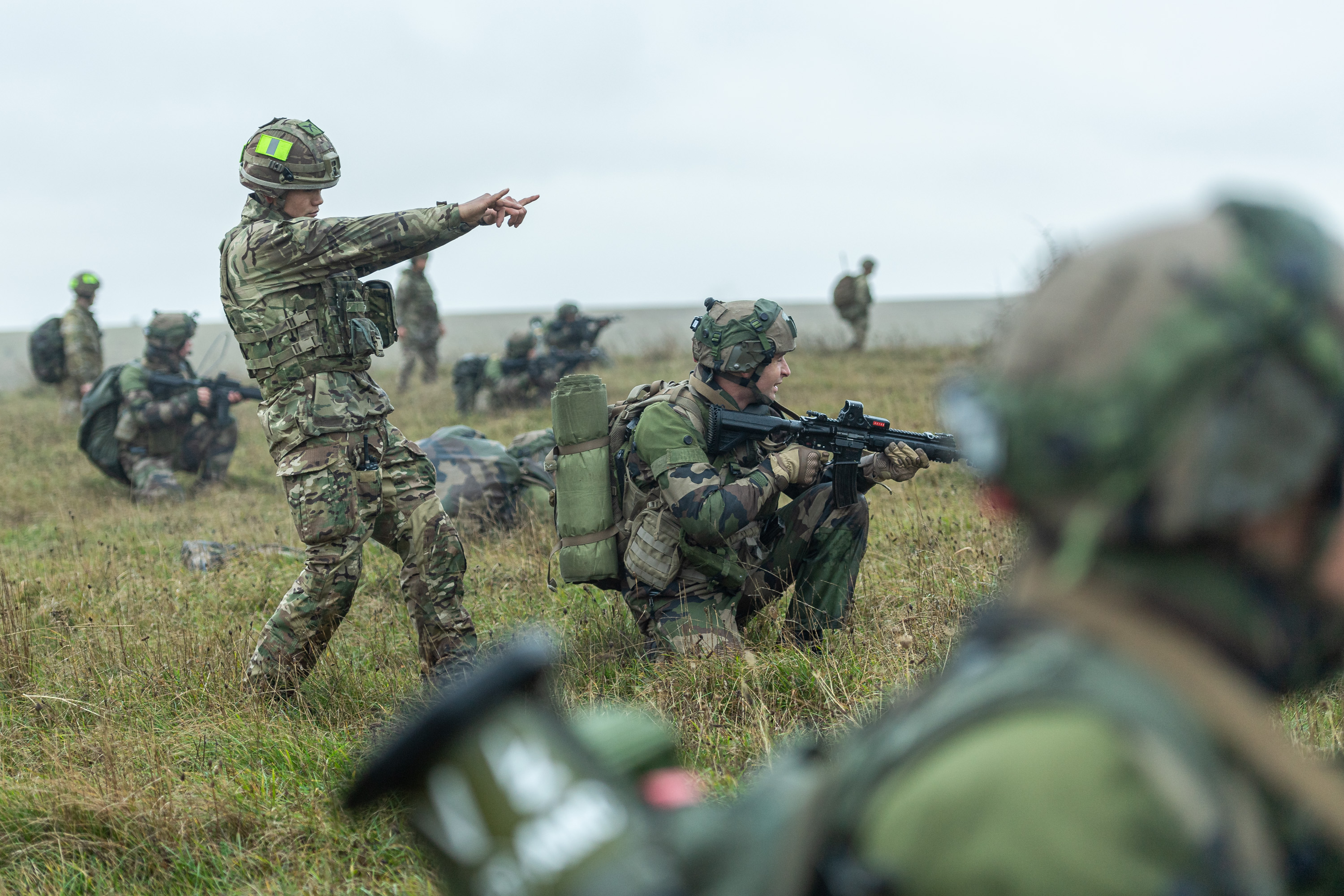|
54th Division (People's Republic Of China)
The 54th Division () was activated in February 1949 under ''the Regulation of the Redesignations of All Organizations and Units of the Army'', issued by Central Military Commission on November 1, 1948,《中央军委关于统一全军组织及部队番号的规定》, http://blog.sina.com.cn/s/blog_7254c7350100xb56.html from three independent regiments of Yuwansu Military District. The division was a part of 18th Corps. Under the flag of 54th the division took part in the Chinese Civil War, including the Huaihai Campaign. In 1951 the division entered Tibet along with the Corps. Several detachments from the division took part in the Battle of Chamdo. The division was then composed of: *172nd Infantry Regiment; *173rd Infantry Regiment; *174th Infantry Regiment. In June 1955, the division was transferred out of Tibet and moved to Wuhan Wuhan; is the capital of Hubei, China. With a population of over eleven million, it is the most populous city in Hubei and the List of citi ... [...More Info...] [...Related Items...] OR: [Wikipedia] [Google] [Baidu] |
People's Republic Of China
China, officially the People's Republic of China (PRC), is a country in East Asia. With population of China, a population exceeding 1.4 billion, it is the list of countries by population (United Nations), second-most populous country after India, representing 17.4% of the world population. China spans the equivalent of five time zones and Borders of China, borders fourteen countries by land across an area of nearly , making it the list of countries and dependencies by area, third-largest country by land area. The country is divided into 33 Province-level divisions of China, province-level divisions: 22 provinces of China, provinces, 5 autonomous regions of China, autonomous regions, 4 direct-administered municipalities of China, municipalities, and 2 semi-autonomous special administrative regions. Beijing is the country's capital, while Shanghai is List of cities in China by population, its most populous city by urban area and largest financial center. Considered one of six ... [...More Info...] [...Related Items...] OR: [Wikipedia] [Google] [Baidu] |
People's Liberation Army
The People's Liberation Army (PLA) is the military of the Chinese Communist Party (CCP) and the People's Republic of China (PRC). It consists of four Military branch, services—People's Liberation Army Ground Force, Ground Force, People's Liberation Army Navy, Navy, People's Liberation Army Air Force, Air Force, and People's Liberation Army Rocket Force, Rocket Force—and four arms—People's Liberation Army Aerospace Force, Aerospace Force, People's Liberation Army Cyberspace Force, Cyberspace Force, People's Liberation Army Information Support Force, Information Support Force, and People's Liberation Army Joint Logistics Support Force, Joint Logistics Support Force. It is led by the Central Military Commission (China), Central Military Commission (CMC) with its Chairman of the Central Military Commission (China), chairman as Supreme Military Command of the People's Republic of China, commander-in-chief. The PLA can trace its origins during the Republic of China (1912– ... [...More Info...] [...Related Items...] OR: [Wikipedia] [Google] [Baidu] |
18th Corps (People's Republic Of China)
The 18th Corps () was a military formation of the Chinese People's Liberation Army which existed from 1949 to 1950. The 18th Corps was activated in February 1949, and initially comprised the 52nd, 53rd and 54th Divisions. It was established at Henan Luyi County Wutai Temple on 18 February 1949. On January 6, 1950, the 18th CPC Central Committee and the Southwest Military Region ordered the 18th Army to enter Tibet, under the cooperation of the 14th Army and the Northwest Military Region. In December 1951, the CPC Central Committee and Central Military Commission decided to establish the Tibet Military Region. The district was established in Lhasa Lhasa, officially the Chengguan District of Lhasa City, is the inner urban district of Lhasa (city), Lhasa City, Tibet Autonomous Region, Southwestern China. Lhasa is the second most populous urban area on the Tibetan Plateau after Xining ... on February 10, 1952, and on 17 March 1952 the 18th Corps was disbanded. Refere ... [...More Info...] [...Related Items...] OR: [Wikipedia] [Google] [Baidu] |
Chinese Civil War
The Chinese Civil War was fought between the Kuomintang-led Nationalist government, government of the Republic of China (1912–1949), Republic of China and the forces of the Chinese Communist Party (CCP). Armed conflict continued intermittently from 1 August 1927 until Communist victory resulted in their total control over mainland China on 7 December 1949. The war is generally divided into two phases with an interlude: from August 1927 to 1937, the First United Front alliance of the KMT and CCP collapsed during the Northern Expedition, and the Nationalists controlled most of China. From 1937 to 1945, hostilities were mostly put on hold as the Second United Front fought the Second Sino-Japanese War, Japanese invasion of China with eventual help from the Allies of World War II. However, armed clashes between the groups remained common. Exacerbating the divisions within China further was the formation of the Wang Jingwei regime, a Japan-sponsored puppet government led by Wang ... [...More Info...] [...Related Items...] OR: [Wikipedia] [Google] [Baidu] |
Incorporation Of Tibet Into The People's Republic Of China
Tibet came under the control of People's Republic of China (PRC) after the Government of Tibet signed the Seventeen Point Agreement which the 14th Dalai Lama ratified on 24 October 1951, but later repudiated on the grounds that he had rendered his approval for the agreement under duress. This occurred after attempts by the Tibetan Government to gain international recognition, efforts to modernize its military, negotiations between the Government of Tibet and the PRC, and a military conflict in the Chamdo area of western Kham in October 1950. The series of events came to be called the "Peaceful Liberation of Tibet" agreed by the Chinese government, the plenipotentiary of the Tibetan Local Government and the Dalai Lama despite several thousand casualties being reported by Chinese generals throughout the invasion, and the "Chinese invasion of Tibet" by the Central Tibetan Administration alongside the Tibetan diaspora. The Government of Tibet and the Tibetan social structure ... [...More Info...] [...Related Items...] OR: [Wikipedia] [Google] [Baidu] |
Tibet
Tibet (; ''Böd''; ), or Greater Tibet, is a region in the western part of East Asia, covering much of the Tibetan Plateau and spanning about . It is the homeland of the Tibetan people. Also resident on the plateau are other ethnic groups such as Mongols, Monpa people, Monpa, Tamang people, Tamang, Qiang people, Qiang, Sherpa people, Sherpa, Lhoba people, Lhoba, and since the 20th century Han Chinese and Hui people, Hui. Tibet is the highest region on Earth, with an average elevation of . Located in the Himalayas, the highest elevation in Tibet is Mount Everest, Earth's highest mountain, rising above sea level. The Tibetan Empire emerged in the 7th century. At its height in the 9th century, the Tibetan Empire extended far beyond the Tibetan Plateau, from the Tarim Basin and Pamirs in the west, to Yunnan and Bengal in the southeast. It then divided into a variety of territories. The bulk of western and central Tibet (Ü-Tsang) was often at least nominally unified under a ser ... [...More Info...] [...Related Items...] OR: [Wikipedia] [Google] [Baidu] |
Battle Of Chamdo
The Battle of Chamdo (or Qamdo; ) occurred from 6 to 24 October 1950. It was a military campaign by the People's Republic of China (PRC) to take the Chamdo Region from a ''de facto'' independent Tibetan state.Shakya 1999 pp. 28–32. The campaign resulted in the capture of Chamdo and the annexation of Tibet by the People's Republic of China. Background Kham was a border region of Tibet. The eastern part of Kham had been under the direct control of China during the Qing dynasty. Its western half is known as Chamdo. The Khampa Tibetans and Lhasa Tibetans held each other in mutual contempt and dislike, with the Khampas in some cases hating Lhasa rule even more than Chinese rule, which was why the Khampas did little to resist Chinese forces as they entered eastern Kham and subsequently took over the whole of Tibet. Likewise, the Qinghai ( Amdo) Tibetans view the Tibetans of Central Tibet (Tibet proper, ruled by the Dalai Lamas from Lhasa) as different from themselves and even t ... [...More Info...] [...Related Items...] OR: [Wikipedia] [Google] [Baidu] |
Wuhan
Wuhan; is the capital of Hubei, China. With a population of over eleven million, it is the most populous city in Hubei and the List of cities in China by population, eighth-most-populous city in China. It is also one of the nine National central city, national central cities and the second most livable city in China. Wuhan historically served as a busy city port for commerce and trading with some crucial influences on Chinese history. The name "Wuhan" came from the city's historical origin from the conglomeration of Wuchang, Wuhan, Wuchang, Hankou District, Hankou, and Hanyang District, Hanyang, which are collectively known as the "Three Towns of Wuhan" ( zh, s=武汉三镇, labels=no). Wuhan lies in the eastern Jianghan Plain, at the confluence of the Yangtze river and its largest tributary, the Han River (Hubei), Han River, and is known as "Nine Provinces' Thoroughfare" ( zh, labels=no, t= ). Wuhan was the site of the 1911 Wuchang Uprising against the Qing dynasty which Dyna ... [...More Info...] [...Related Items...] OR: [Wikipedia] [Google] [Baidu] |
101st Antiaircraft Artillery Division Of Air Defense Force (People's Republic Of China)
1 (one, unit, unity) is a number, numeral, and glyph. It is the first and smallest positive integer of the infinite sequence of natural numbers. This fundamental property has led to its unique uses in other fields, ranging from science to sports, where it commonly denotes the first, leading, or top thing in a group. 1 is the unit of counting or measurement, a determiner for singular nouns, and a gender-neutral pronoun. Historically, the representation of 1 evolved from ancient Sumerian and Babylonian symbols to the modern Arabic numeral. In mathematics, 1 is the multiplicative identity, meaning that any number multiplied by 1 equals the same number. 1 is by convention not considered a prime number. In digital technology, 1 represents the "on" state in binary code, the foundation of computing. Philosophically, 1 symbolizes the ultimate reality or source of existence in various traditions. In mathematics The number 1 is the first natural number after 0. Each natural number, ... [...More Info...] [...Related Items...] OR: [Wikipedia] [Google] [Baidu] |
Infantry Divisions Of The People's Liberation Army
Infantry, or infantryman are a type of soldier who specialize in ground combat, typically fighting dismounted. Historically the term was used to describe foot soldiers, i.e. those who march and fight on foot. In modern usage, the term broadly encompasses a wide variety of subspecialties, including light infantry, irregular infantry, heavy infantry, mountain infantry, motorized infantry, mechanized infantry, Airborne forces, airborne infantry, Air assault, air assault infantry, and Marines, naval infantry. Other subtypes of infantry, such as line infantry and mounted infantry, were once commonplace but fell out of favor in the 1800s with the invention of more accurate and powerful weapons. Etymology and terminology In English, use of the term ''infantry'' began about the 1570s, describing soldiers who march and fight on foot. The word derives from Middle French , from older Italian (also Spanish) ''infanteria'' (foot soldiers too inexperienced for cavalry), from Latin '' ... [...More Info...] [...Related Items...] OR: [Wikipedia] [Google] [Baidu] |
Military Units And Formations Established In 1949
A military, also known collectively as armed forces, is a heavily armed, highly organized force primarily intended for warfare. Militaries are typically authorized and maintained by a sovereign state, with their members identifiable by a distinct military uniform. They may consist of one or more military branches such as an army, navy, air force, space force, marines, or coast guard. The main task of a military is usually defined as defence of their state and its interests against external armed threats. In broad usage, the terms "armed forces" and "military" are often synonymous, although in technical usage a distinction is sometimes made in which a country's armed forces may include other paramilitary forces such as armed police. Beyond warfare, the military may be employed in additional sanctioned and non-sanctioned functions within the state, including internal security threats, crowd control, promotion of political agendas, emergency services and reconstruction, ... [...More Info...] [...Related Items...] OR: [Wikipedia] [Google] [Baidu] |





